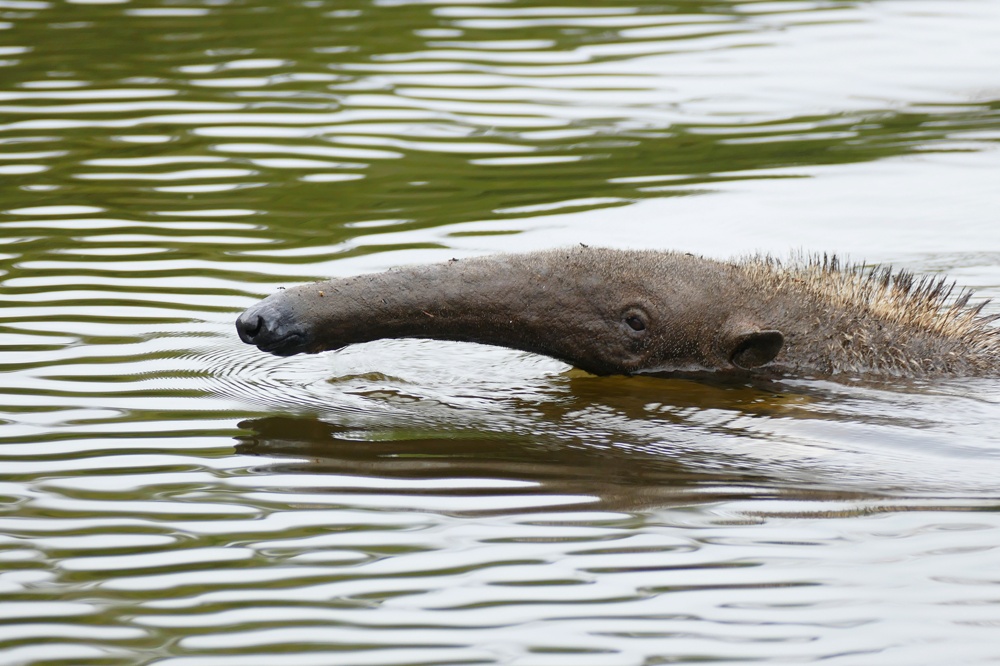
The world’s largest tropical wetland is ablaze
The Pantanal, the largest tropical wetland and one of the most biodiverse ecosystems on the planet, is burning like never before. Home to around 1200 vertebrate animal species, including jaguars, giant river otters, tapirs and giant anteaters, this vital ecosystem is on course to disappear by 2050. A prolonged drought and land clearing by fire have created a ‘perfect storm’ that needs urgent action if this global treasure is to be saved.
Unique wetlands under threat
The Pantanal, one of the most biodiverse places on the planet, is shared between Brazil, Bolivia and Paraguay. It is home to a richness of wildlife including the world’s densest population of jaguars, giant river otters, caimans, giant anteaters and birds. Many bird species depend on it as a stopping point on their annual migration.
The Pantanal is also home to 1.2 million people. It protects far more people from floods, and purifies and provides water. Experts estimate that a healthy Pantanal provides ecosystem services worth US$112 billion. This does not include revenue generated by ecotourism, including jaguar tourism, which in the Encontro das Aguas park alone generates an estimated US$6.8 million a year.
Like many tropical environments, it is under constant pressure. 12% of this unique ecosystem has already been deforested, and less than 5% is protected. The threats are numerous. A shift from smaller-scale farming to huge industrial farms that feed international demand has driven greater deforestation, and fire is the ‘weapon of choice’ to clear the land for cattle or planting.
Farms bring runoff of agrochemicals into the unique waterways of this irreplaceable ecosystem. Mining, hydroelectric projects and other industrial activities upstream are eating into and degrading the wetlands, and mercury used in mining has contaminated Pantanal rivers.
A perfect storm
Under any circumstances, these activities would represent a serious threat to the survival of the Pantanal. This year, it has become a crisis. From January to May, the floods that would normally replenish the rivers, vegetation and soils didn’t arrive. The Pantanal received around half of the normal rainfall. The Paraguay River that cuts through the Pantanal is at its lowest point since 1973. The severe drought has dried the underground peat soils enabling the fires, the worst since records began, to rage out of control.
As of September 6th, a record 23,490 square kilometres had burned – nearly 16% of the Brazilian Pantanal. A key jaguar habitat, the world famous Encontro das Aquas Park is ablaze, and at least 200 jaguars that drew tourists have died, alongside countless capybaras, coatis, primates and a host of other wildlife unable to flee the smoke and flames.
These fires are extremely difficult to deal with because the peat is also burning. These underground fires are usually tackled by digging a trench to contain them, but as state firefighter Lieutenant Isaac Wihby points out, “how do you do that if you have a line of fire that’s 20 kilometres long?”
Many of these fires are deliberately set to clear the land for agriculture, and the drought conditions mean that usual fire breaks like streams and roads are not holding back the flames. The Bolsonaro Government has turned a blind eye to illegal deforestation, and taken steps to make it easier to legalise after the fact.
A 120 day moratorium on fire clearing in the Amazon and Pantanal, issued in July, is not likely - or perhaps even intended - to make a difference; people on the ground report that almost all of the fires in 2020 have been started by illegal land clearing activities initiated after the moratorium was announced.
Local and global solutions
The most urgent need is firefighting support: Brazil’s teams are already overstretched due to Covid-19 and the burning of the Amazon. In Brazil, better funding of key environmental agencies, making it possible for those illegally setting fires to be caught and punished, is a vital next step. This should intersect with better protection of indigenous lands and sovereignty over those lands. Efforts to retrospectively legalise illegal settling and development of land in protected areas and indigenous territories - the so-called “land grabbing law” - should be halted and reversed.
Beyond Brazil, new legislation to introduce due diligence requirements for supply chains of forest commodities coming into the EU, intended to limit the environmental impact, could prove a game-changer, as could longer-term prospects for a regulation that could drive bilateral engagement between the EU and countries such as Brazil. The EU has also signalled a willingness to include environmental conditions as part of trade deals with Latin America; this must form a key part of negotiations. But with fires in the Pantanal quadruple the size of the largest fire in Brazil’s Amazon forest, the time to act is upon us.
The survival of the Pantanal requires a global effort. The fires ripping through the Pantanal, much like those in Amazonia and California, and before them in Siberia and Australia, are significantly more likely because of climate breakdown.
Global heating is affecting rainfall, turning the Pantanal into a tinderbox. Swift, ambitious effort by all nations to acknowledge and meet their climate commitments will help save this ecosystem and the people and wildlife who depend on it. Climate breakdown won’t wait, and neither must we.
The image at the top of this article, reproduced here unchanged, is provided courtesy of Bernard Dupont under a Creative Commons license.
SIGN UP FOR OUR EMAILS AND STAY UP TO DATE WITH EJF